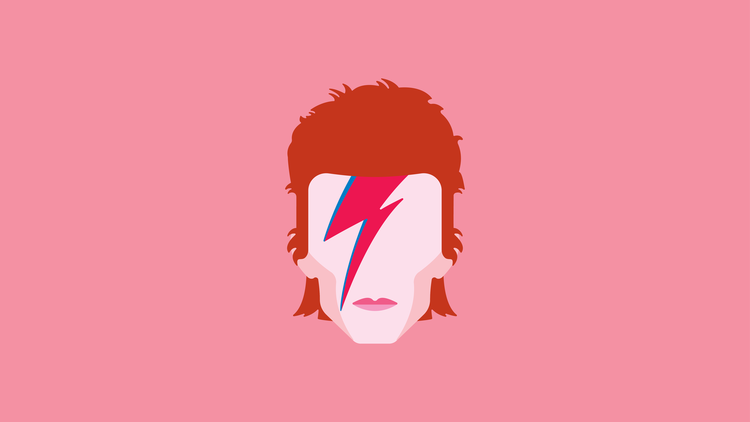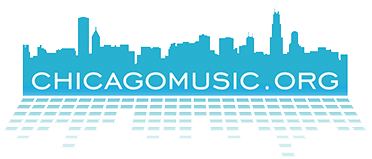Bowie was here: Remembering the icon’s time in Chicago

19 Jan 2016
In 1980, David Bowie spent a month in Chicago playing the lead role in a production of “The Elephant Man” at the Blackstone Theatre (now the Loop’s Merle Reskin Theatre). Metro owner Joe Shanahan remembers the legendary English artist, who passed away Sunday after an 18-month battle with cancer, frequently coming to the iconic Lincoln Park nightclub Neo during his time in the city.
“He’d drop in on a pretty regular basis. Neo was the place he’d go to blow off some steam, where no one would bug him and he would hang out. I remember Iggy Pop being with him as well a few times,” said Shanahan, who opened his legendary rock club two years later in 1982. “For some reason, he felt like one of us—like the captain of the misfit kids’ ship. He preached that it’s OK to be weird, it’s OK to be gay, it’s OK to be bisexual, it’s OK to wear your hair however you want.”
That ethos shaped the musician’s entire public life: Bowie, who died just two days after his 69th birthday and the release of his excellent 25th studio album, “Blackstar,” was a visionary performer and charismatic, chameleonic artist who constantly blurred the lines between genre, gender and identities. He was an influential, once-in-a-lifetime talent whose expansive, trailblazing life and career in music, art and film can’t be boiled down to a list of best albums, songs or accomplishments. He was that transcendently good.
And though the enigma (born David Robert Jones in London in 1947) spent most of his career and life in New York City, Los Angeles and Europe, never making Chicago a long-term home, he made more than an impression on this city beyond performances like his Oct. 7, 1972, debut at the Auditorium Theatre on the Ziggy Stardust tour.
While working on the production, he also found time out of his busy, eight-show-per-week performance schedule to explore. But as far as museums went, he was unimpressed, telling Rolling Stone: “I’ve seen aquariums and planetariums and that dreadful Museum of Science and Industry, which is like a paean to General Motors. Quite ghastly in its corrupt values—including its splendiferous Muppet presentation, where you pay $1.50 to get in, see fifteen stuffed Muppets in a glass case, and then that leads to a shop where you can buy merchandise! I mean, it was a fucking disgrace.” (Ironically, six years later he co-starred in Muppets creator Jim Henson’s film “Labyrinth.”)
While the museums may not have made a good impression, Neo clearly did. Suzanne Shelton, the club’s first DJ, told RedEye, “I would often go to Neo on my night off because it was basically my home and all my friends were there. I looked up and saw him walk in, and the whole place was electrified. He came into the club’s office, and we hit it off. We saw each other once or twice a week during the time he was in town.
“I was struck by how funny he was,” she continued. “He was really playful and fun. He knew a lot of stuff and was really compassionate. He talked about children his son’s age starving in Africa and wept. He possessed an extraordinary range of moods and emotions. He was really gracious; he would offer to buy the staff a drink.”
Shelton says she and Bowie kept in touch by phone for a year after his time in Chicago. One Saturday night, she was at work and received a particularly memorable call. “I think he must have been with John Lennon because he said, ‘At 2 a.m. I want you to turn down the music and ask everybody to yell “Peace!” ‘ she said. “It was funny because at 2 a.m. on a Saturday morning I can’t really do that, but I think he really wanted the best for the world. He would always end phone calls by saying ‘God bless.'”
After a three-night stint at Rosemont Horizon Arena (now Allstate Arena) in 1983 and a two-night stint there in 1987, he came back in 1990 for two nights at Tinley Park’s World Music Theatre (now the Hollywood Casino Amphitheatre). Local musician Jason Narducy, who played in Chicago bands Verbow and Verboten and is now featured in national acts Bob Mould Band, Superchunk and his own project Split Single, recalled that show, saying, “[My friend] and I spent a week’s worth of pay from our summer jobs to get 10th-row tickets at the outdoor arena.” He remembers Bowie’s unique stage setup and lighting rig. “Twenty-six years later I still don’t know how he did [such a great show],” he said. “What was striking to me about his career was how he seemed to handle everything with such grace and poise.” Bowie also returned to Tinley Park to the New World Ampitheater on the Dissonance Tour with Nine Inch Nails in 1995.
Bowie returned to play the Vic Theatre and Aragon Ballroom in 1997. Reviewing the latter performance, the Chicago Tribune’s Kevin McKeough wrote, “Bowie enhanced new and old material alike with characteristically inventive visuals, including striking video projections, a pair of giant eyeball balloons and a complex array of strobe lights and lasers that bathed the white-draped stage.” Bowie’s subsequent local shows, headlining Moby’s Area2 Festival in 2002 at what was then the Tweeter Center in Tinley Park and a three-night stint at Rosemont Theatre in 2004 during his last North American tour, were both rapturously reviewed. The Chicago Tribune’s Greg Kot wrote of the former, “there was Bowie gliding across the stage like a tuxedoed vision from a 1930s cabaret, impervious to the heat, crooning hits (“Heroes,” “Ziggy Stardust”), obscurities (“Life on Mars,” a lacerating “Afraid of Americans”) and oddball covers (the Pixies’ “Cactus,” Neil Young’s “I’ve Been Waiting for You”) with equally persuasive assurance.”
Shanahan was there at the Rosemont Theatre. “He played three nights, and one of those shows I went with Billy Corgan,” he said. After the concert the two went backstage, and Corgan introduced Shanahan to Bowie. “He was so gracious; he shook my hand with his eyes sparkling and this huge smile, saying, ‘This is such a pleasure to meet you.’ I could have been a fanboy, but I just decided to shut the fuck up and shake his hand and tell him how much I enjoyed the show.
“Everyone has a band they road-trip for and Bowie was that. I’m never going to forget that,” he added. “That guy changed my life—I’m so somber today. I found out this morning when my daughter came home from Smart Bar.”
Even now, when Shanahan DJs at Smart Bar, you can expect to hear something from Bowie at every set.
From Sept. 23, 2014, to Jan. 4, 2015, Chicago’s Museum of Contemporary Art hosted “David Bowie Is,” an extensive retrospective of the artist’s career that featured more than 400 items from Bowie’s archive including set props, costumes, artwork, handwritten lyrics and performance footage. The venue was the only North American destination to hold the exhibit. While Bowie never visited the museum, to commemorate “David Bowie Is” the City of Chicago declared the opening date to be, “David Bowie Day in Chicago.”
To properly summarize the many accomplishments and innovative albums David Bowie produced throughout his decadeslong career—I’ll always think “Hunky Dory,” “Station to Station,” “Low” and “Heroes” are pretty much perfect—would require thousands more words. Every fan, friend and collaborator has a different story about the man, a different favorite album and a different favorite performance. He meant so much to people who devoured his music and even more to those who felt alienated and cast aside in society. He was an outsider embraced by the world.
SOURCE/FULL ARTICLE: RED EYE CHICAGO
